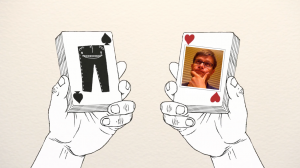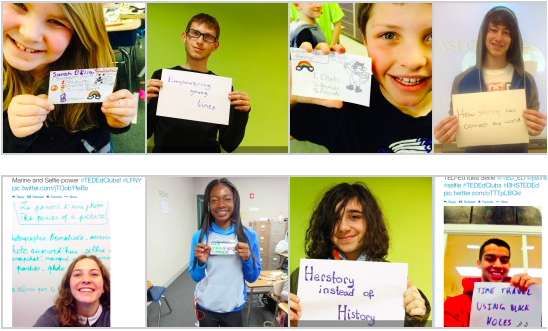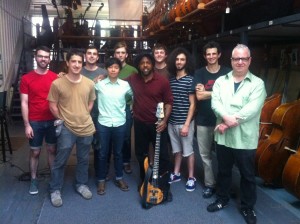
Deconstructing the first live-action TED-Ed Lesson (featuring Victor Wooten)
The TED-Ed Team feels lucky to have created the first live-action TED-Ed Lesson with five-time Grammy winner, and Béla Fleck and the Flecktones bassist, Victor Wooten.
The shoot took place on a Saturday, and while the 10-person camera, lighting and sound crew primed the bass-riddled second level of Manhattan’s David Gage’s Repair Shop, a few of us decided to try our hand at documenting the creative process of each artist in the room. These pictures, taken with our cell phones, tell the story behind the “one-shoot” TED-Ed Lesson entitled, Victor Wooten: Music as a language.
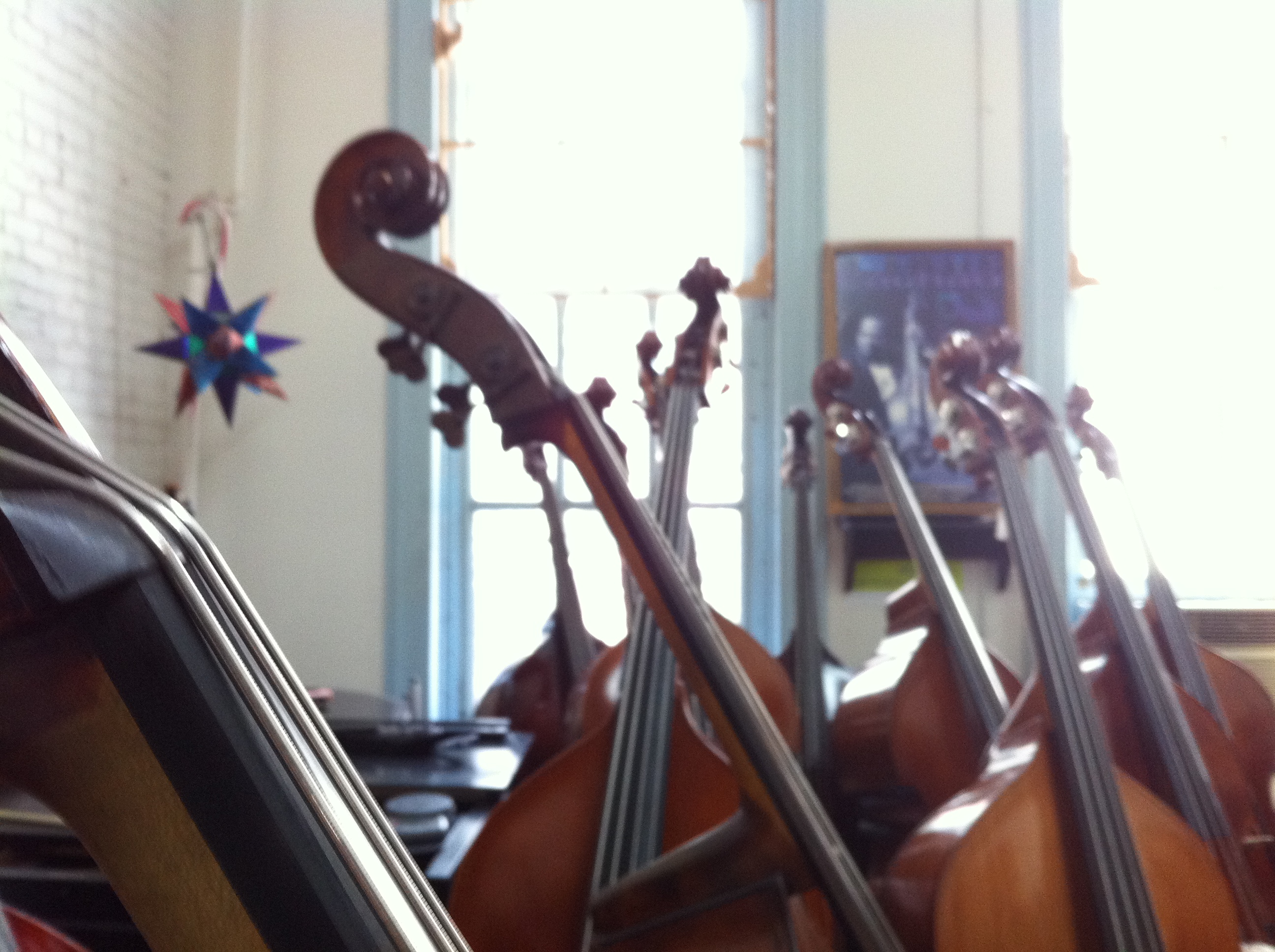
8:00am The film crew arrived two hours before Victor to be sure they had ample time unload, setup and solve every problem the beautiful location could possibly pose to their super-sensitive HD camera. The first problem noted was the extreme light pouring in through one side of the room.
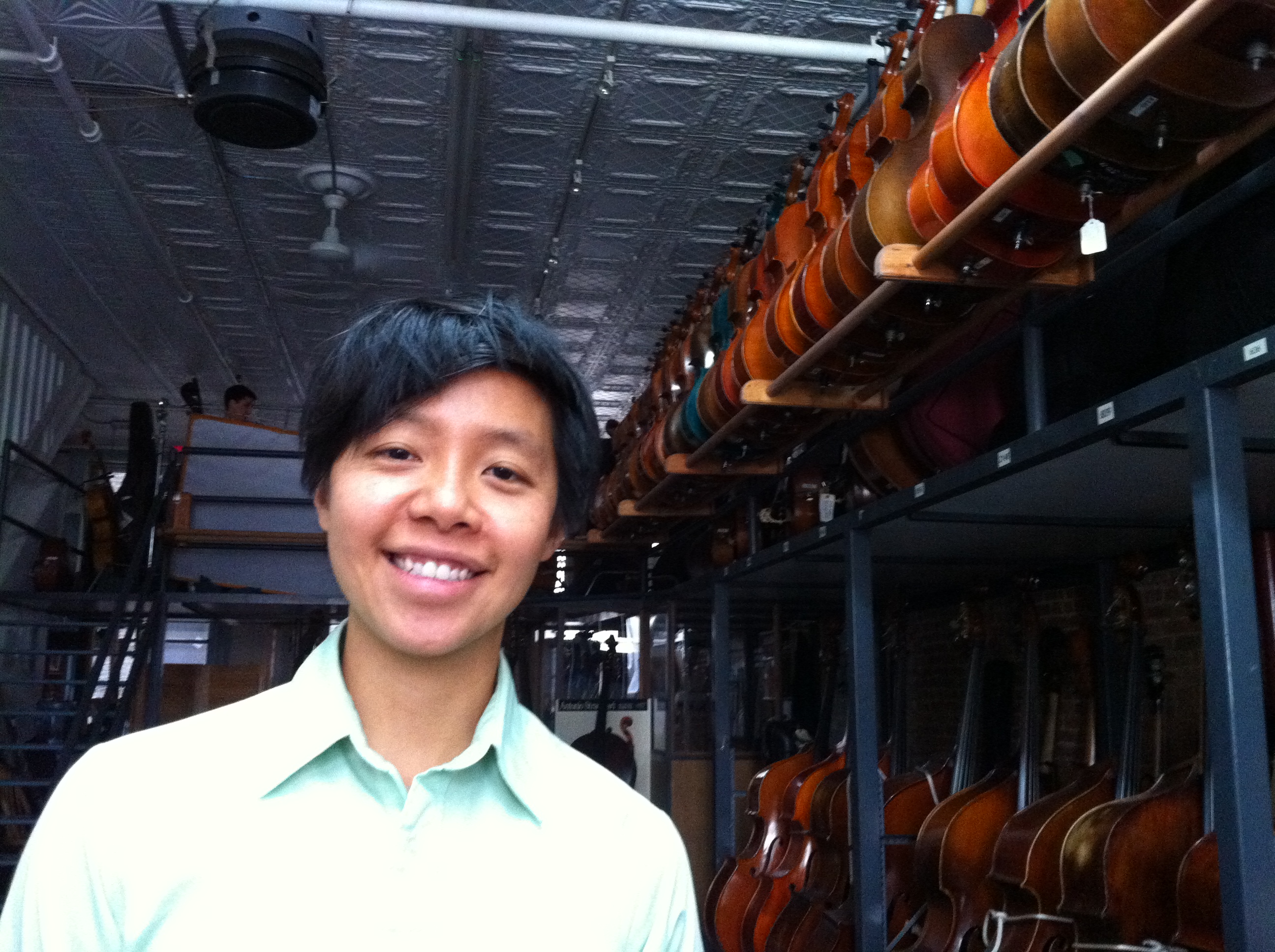
You can see the extreme difference in exposure in this picture in which we photographed Lesson Director, Angela Cheng, with our backs to window shown in the previous picture. One side of the room is completely light. The other, completely dark.
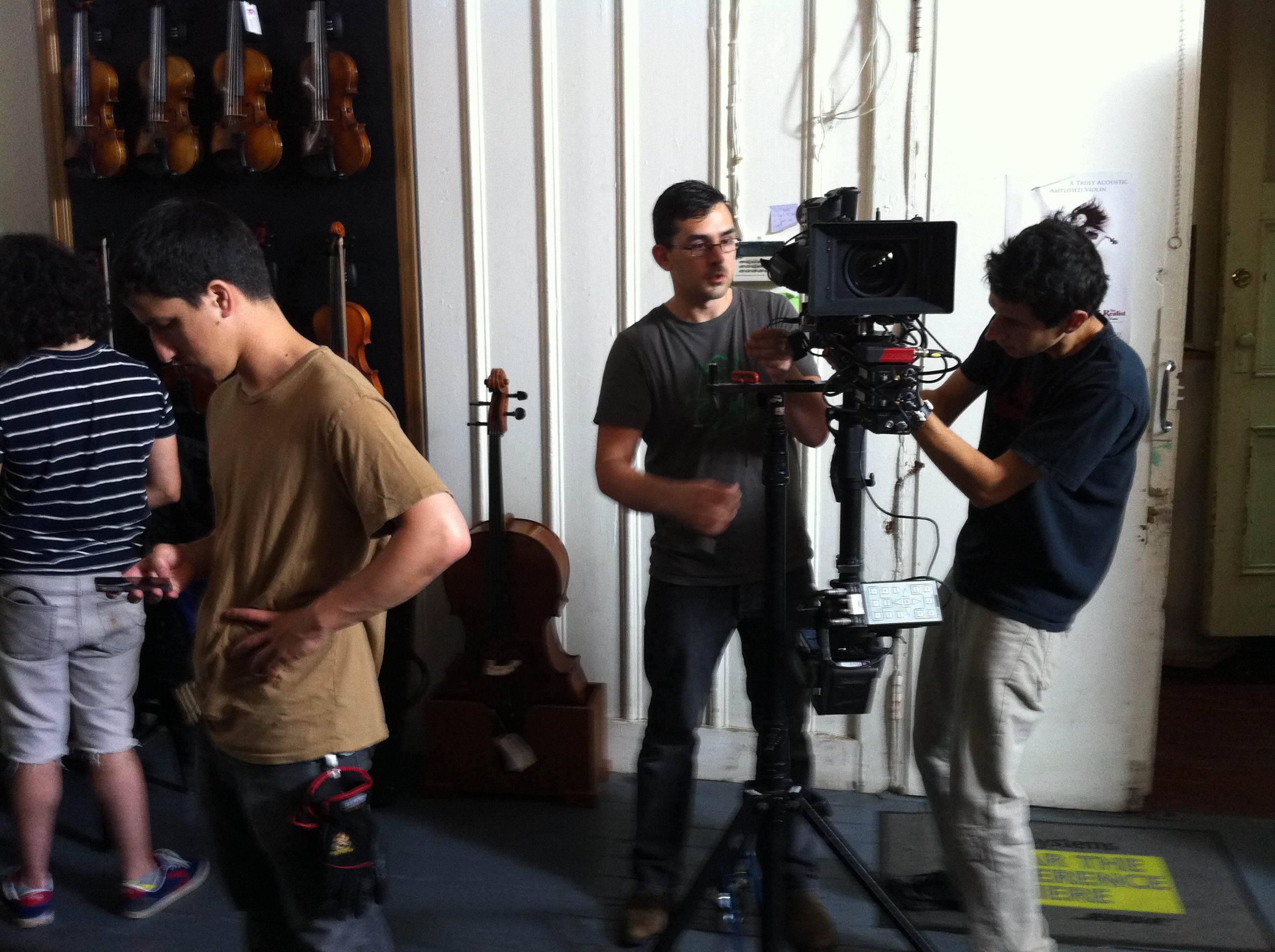
8:30am Using massive film lights to brighten the shadowy areas and match the exposure levels of the window was the obvious solution to the team’s first problem of the day. However, the solution wasn’t just as simple as positioning a light. The operating plan was to use a steadycam (pictured above) to walk in circles around Victor as he performed. So, lights located anywhere on the same plane as Victor would also be picked up by the camera, which was unacceptable to the team.
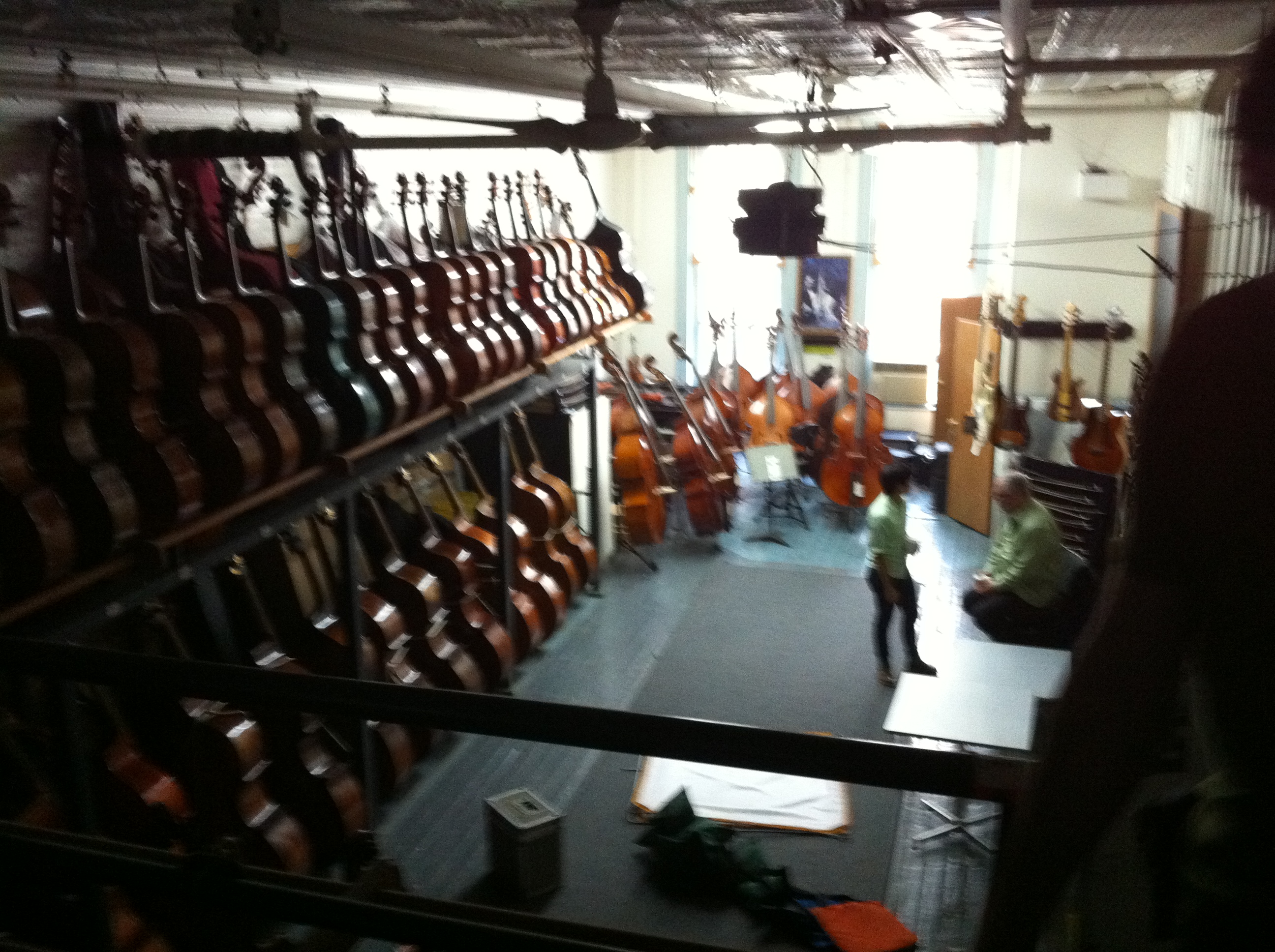
Lucky for us, the room had a small balcony opposite the over-exposed window. This was the perfect perch to position lights that could spotlight Victor, illuminate any unwanted shadows and add a controlled visual texture to the room.

In charge of creating that texture was a most capable cinematographer named, Anthony Jannelli [pictured far right]. If you have seen Silence of the Lambs or Independence Day, then you have seen just a few examples of Anthony’s incredible work in Film.
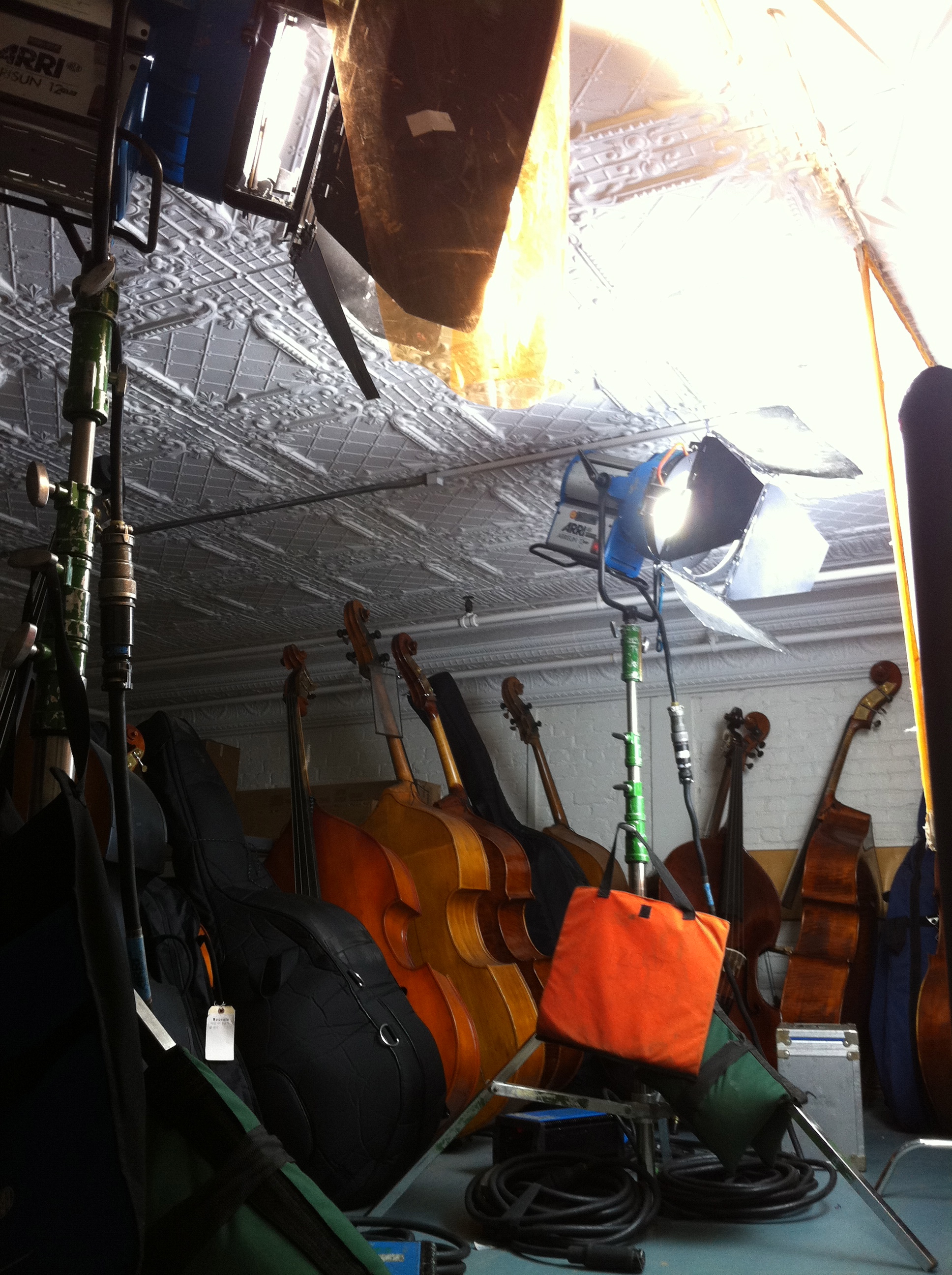
9:00amWe cleared out a few of the beautiful basses waiting for repair and installed two massive lights on the balcony. The gel material you see over the first light balanced the light’s color to match that of the window on the far side of the room. And the yellow screen you see in the far right of the picture diffused each light making them less harsh on Victor and the instruments around him.
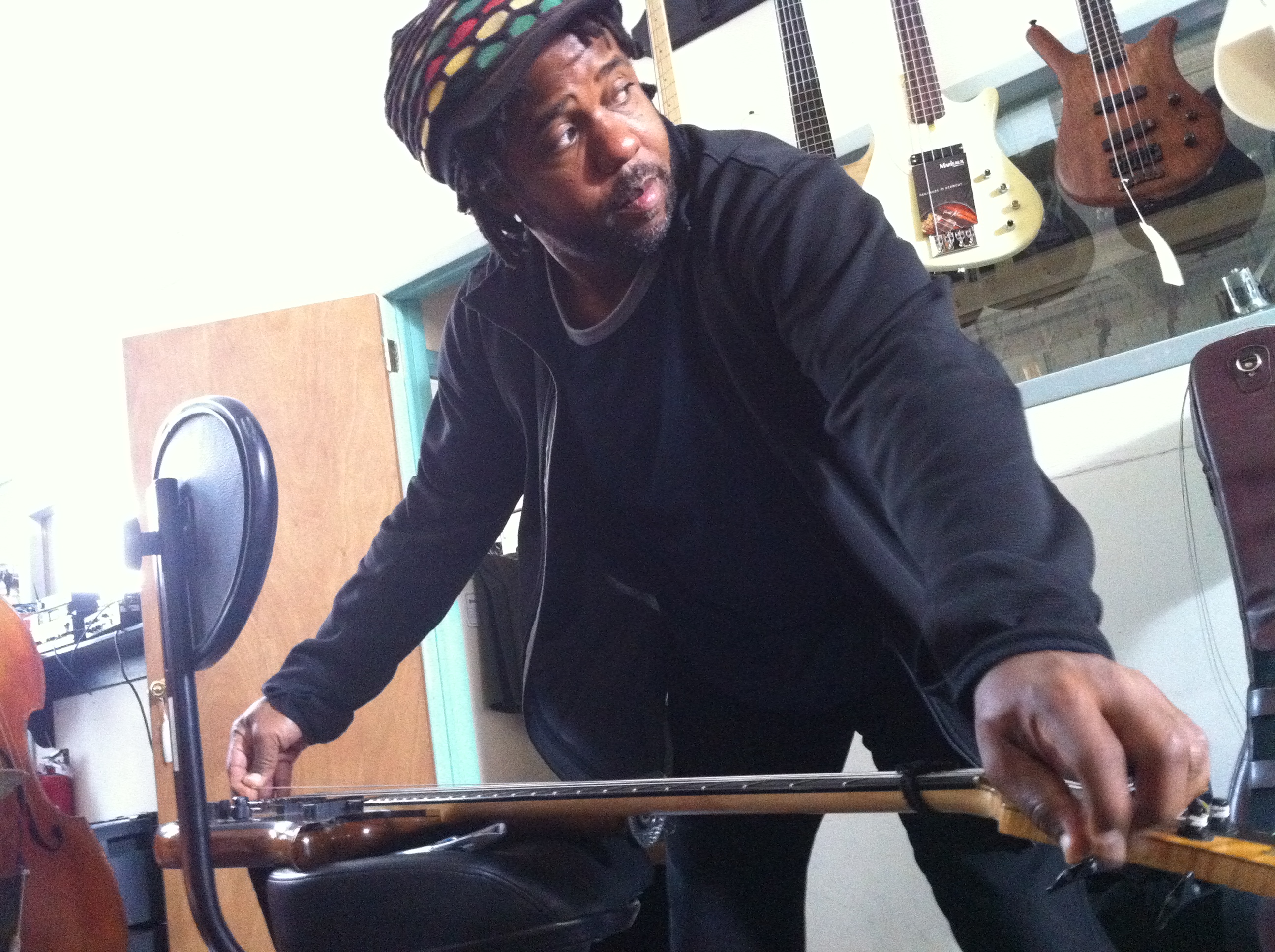
10:00am Just as we finished lighting the scene, Victor showed up. We each took a moment to let him know how much we appreciated his work, and he began stringing up his electric bass guitar.
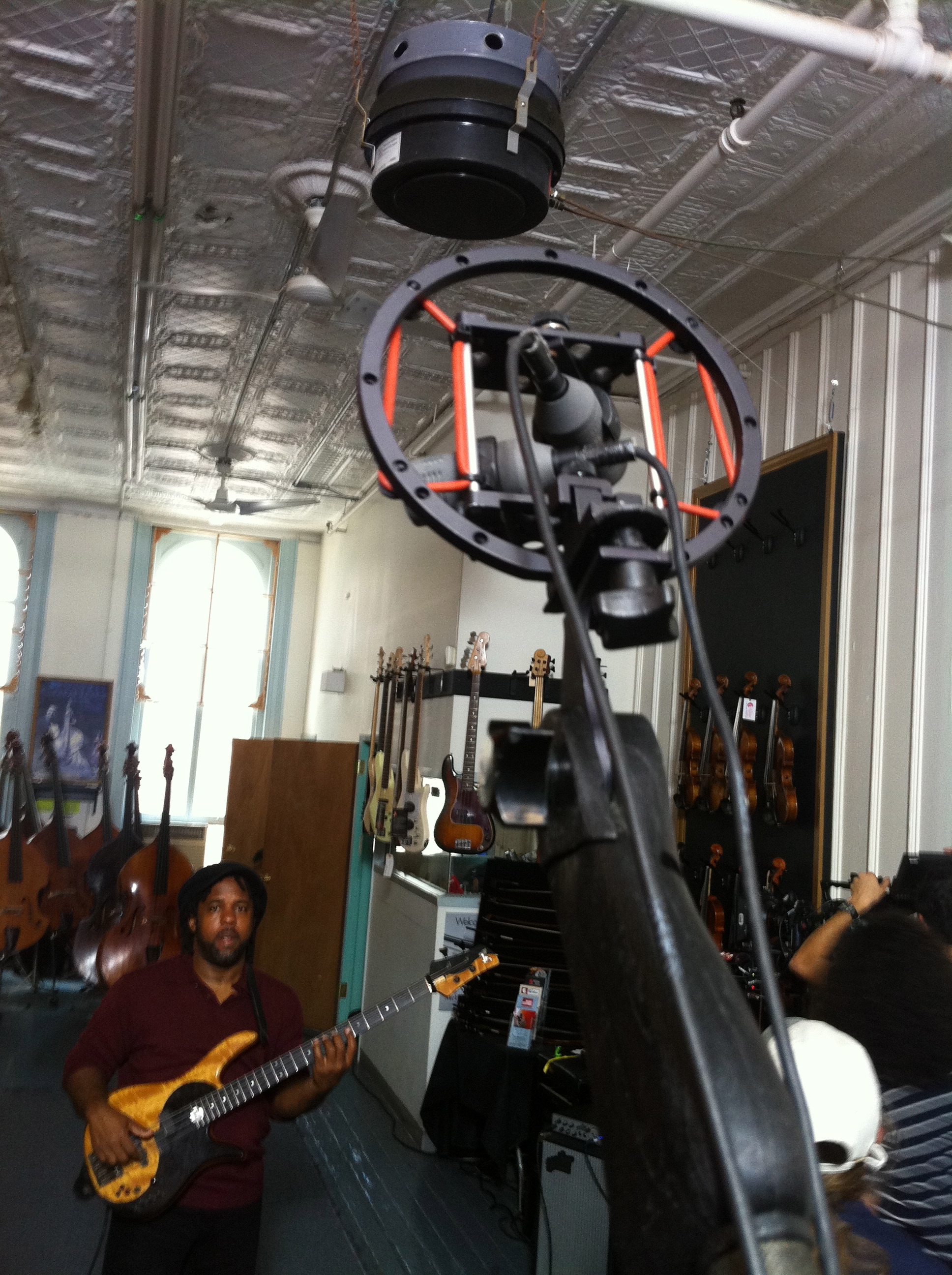
10:15am Ensuring that we captured great sound was the next major challenge. Victor decided to plug into an amp located just behind him, which allowed the sound engineer, Jon Moore, to mount a microphone off camera between the lights on the balcony.
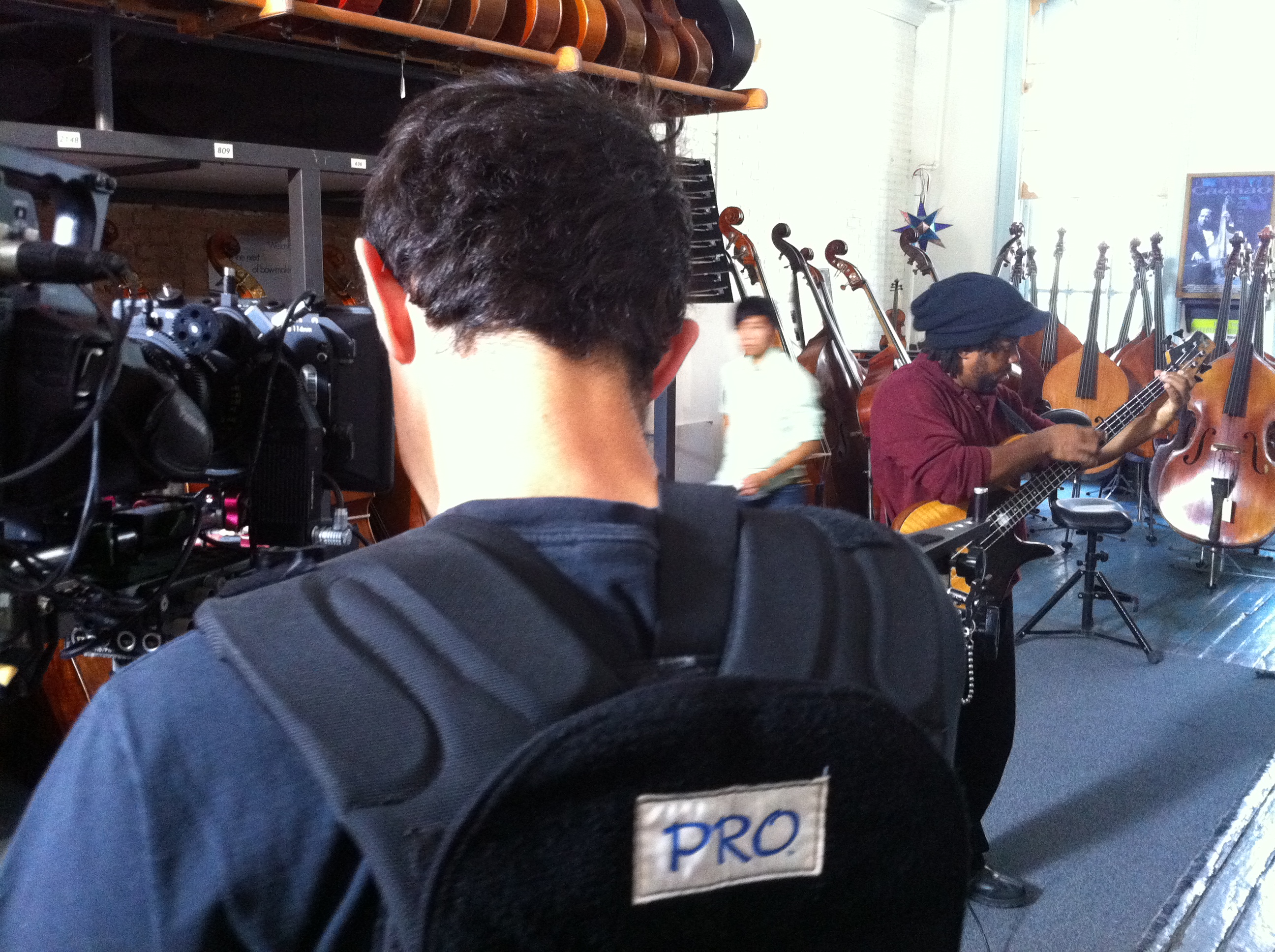
10:30am Next, steadycam operator, Michael Fuchs, suited up for one practice run. He couldn’t do too many rehearsals because the camera and harness together weighed well over 100 pounds.
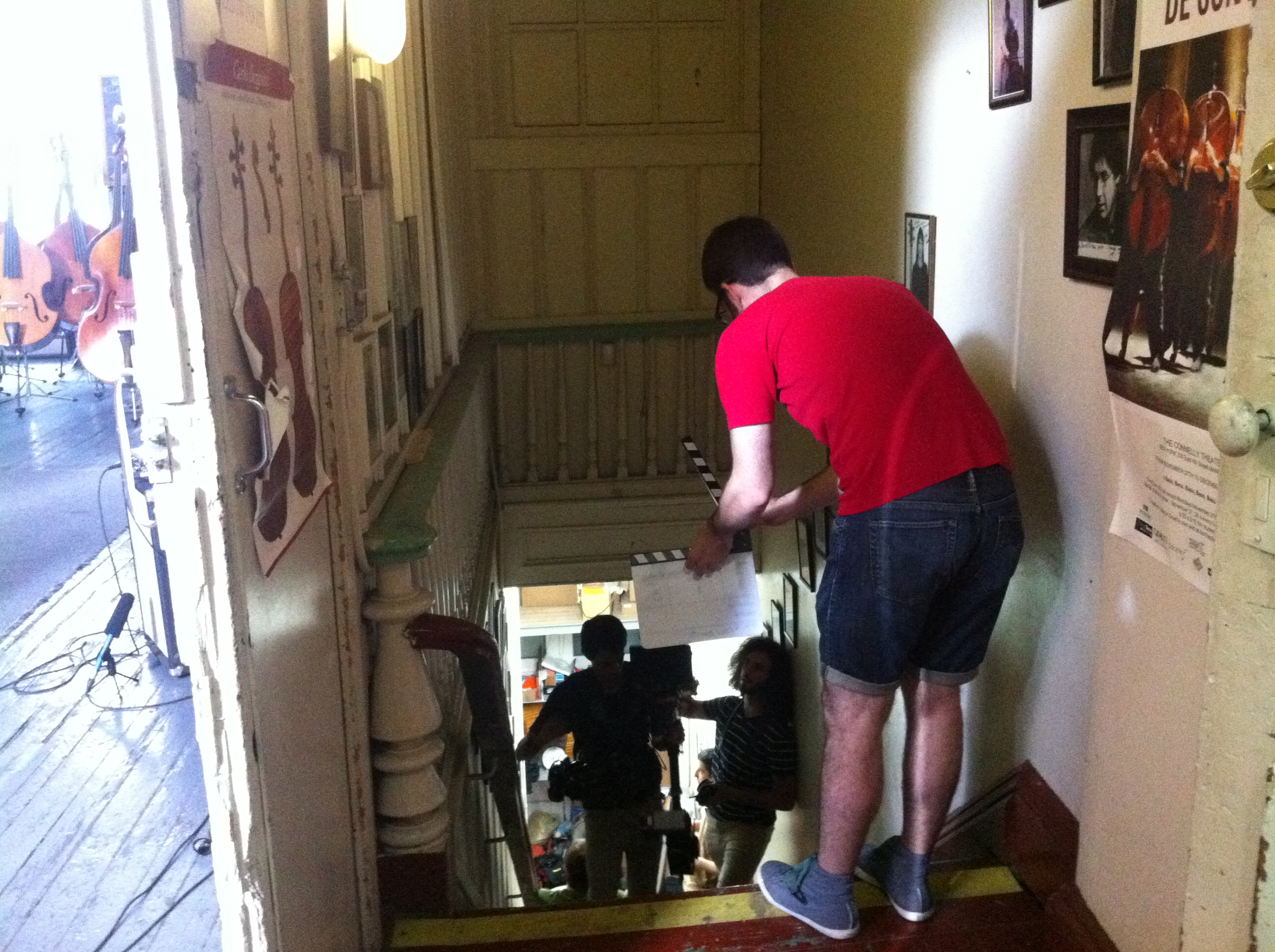
11:00am We were ready. Project Facilitator, and TED-Ed team member, Jordan Reeves marked the first scene with the electronic slate….
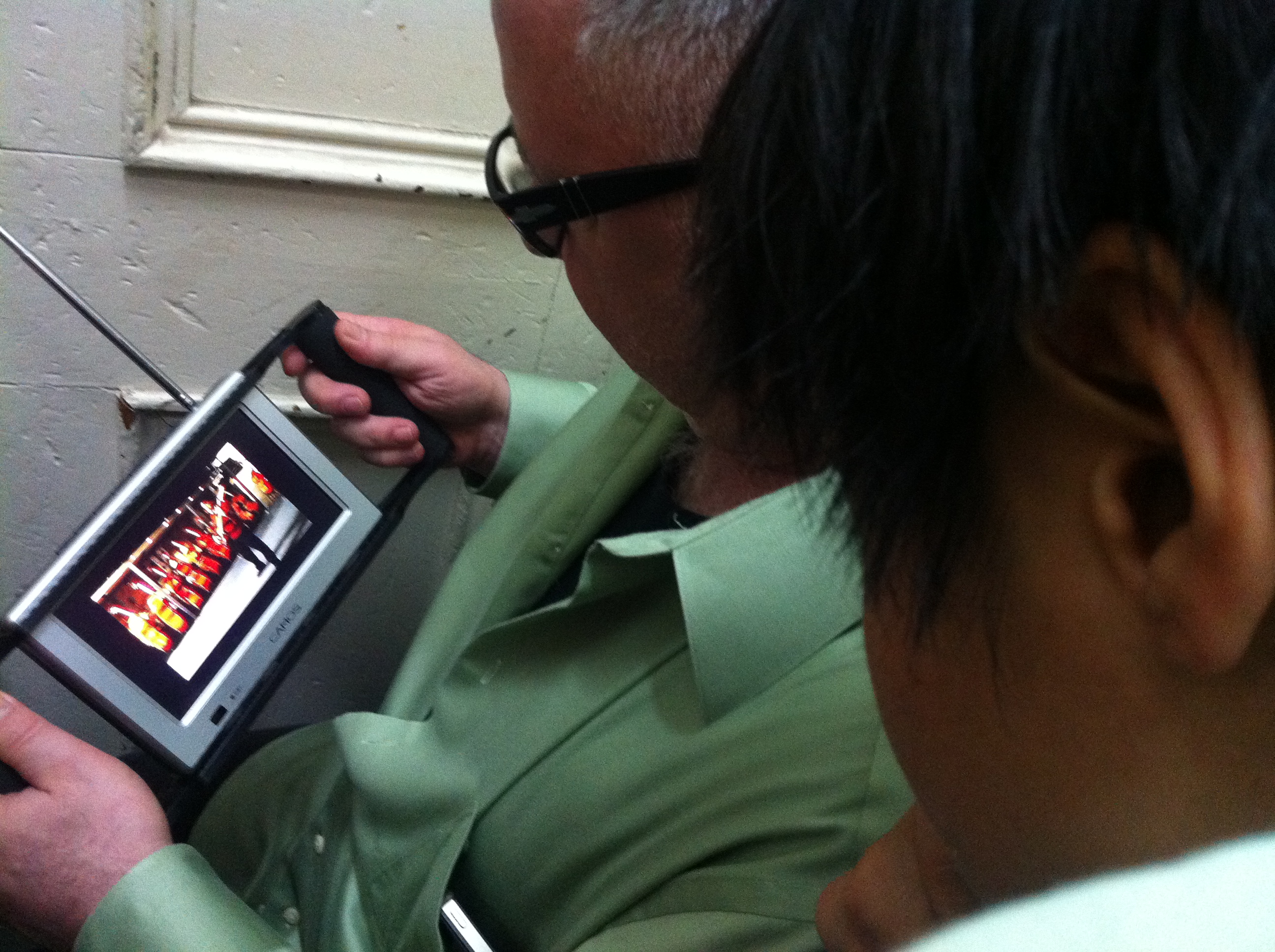
….and Anthony and Angela yelled “action” as they monitored the footage behind a closed door in the hallway.
After many hours of prep work, the shoot itself was finished after two consecutive and nearly identical five minute takes. Victor performed brilliantly in both.
1:00pm After breaking down and returning our rental equipment, the only tasks left were to ingest the footage into Final Cut Pro, collectively decide on the best take, splice in Victor’s narration, balance the levels and share the Lesson on TED-Ed!
Check out the full TED-Ed Lesson here. If you look very closely, you might see the sound guy hiding behind a bass. Does knowing the story behind the shoot change your perception?
